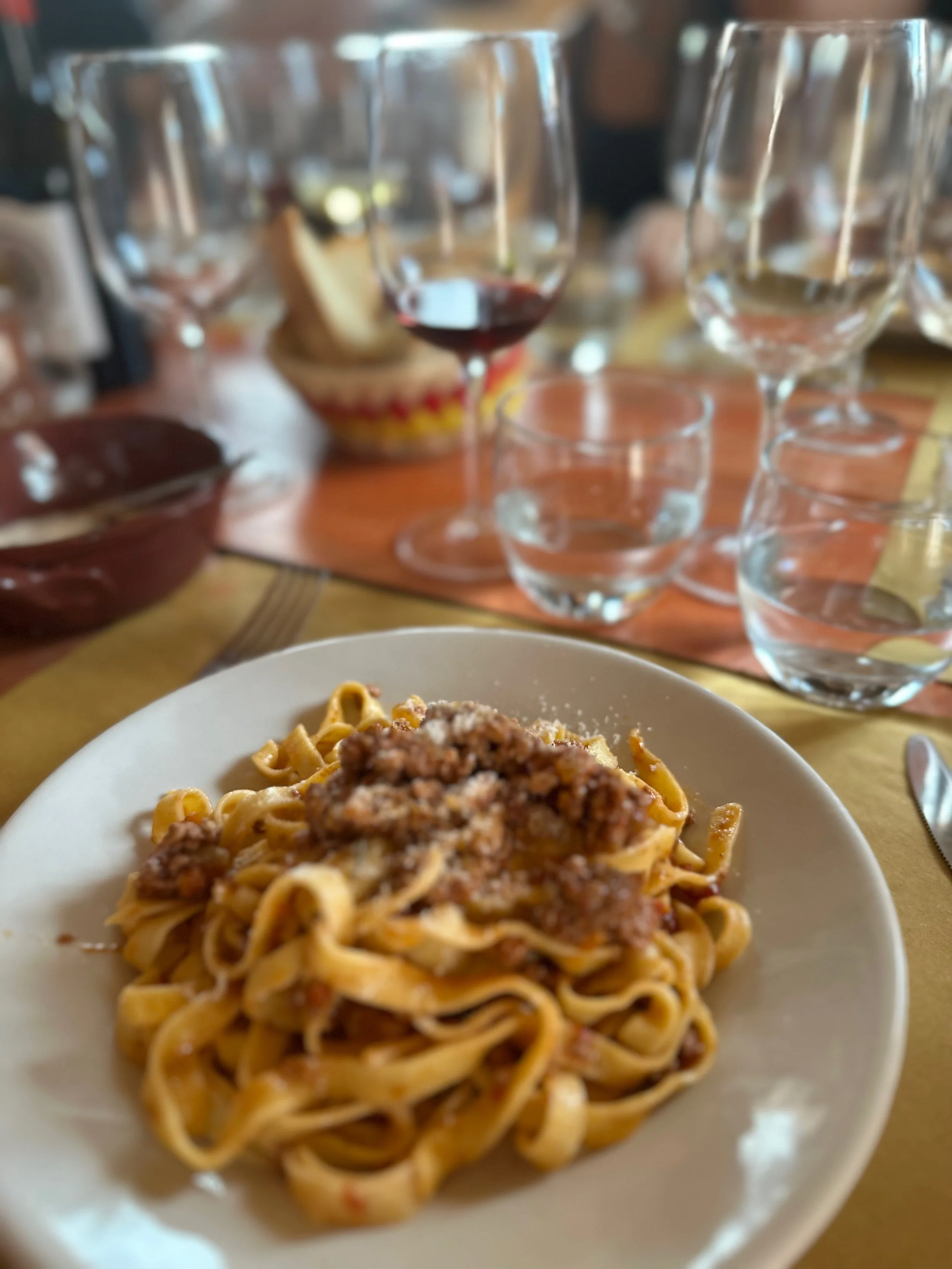Sparkling White with Small Appetizer to Welcome Us
One of the challenges when traveling is to bring back souvenirs, photos, and memories. After being in Italy for the third time, I was focused on eating all my souvenirs or bringing them back to eat or drink them as well.
What I hadn’t thought I would bring back are new techniques to cooking.
In a cooking class in Tuscany, I told the instructor how I liked to cook and he asked what my “go-to” dish was, and honestly, I had no idea. However, what I’m working on perfecting is lasagna so that’s what I told him. If you can make a good lasagna, you probably have many friends.
I told him I made a lasagna out of squash, and he said he had just made one out of squash too! He asked if I used Bechamel sauce, which I did! It came out amazing! (It was a ton of work, but worth it!) It was nice to share that, as bechamel sauce is something I’m just learning.
In the cooking class, he used beef, veal, and sausage in his ragu, but I made a lasagna with substitutions, and it was absolutely delicious. I made a lasagna with beef and sausage for guests and a lighter one using tofu mixed with sausage and tofu with fettucini. Here is the recipe.
And before you call me out and say using tofu is blasphemy, I’d like to share what I learned about making a great ragu sauce - not spaghetti sauce, (because there is no such thing in Tuscany). With these secrets, it doesn’t matter what kind of “protein” is used.
Here are my top five secrets to making a great Ragu sauce.
1. Use the best ingredients.
When using wine, use a good wine. I used to use the cheapest wine, and sometimes one that had already turned stale, and our instructor said that was BAD! He said, use cheap wine, and you’ll have a so-so ragu. And for sure, do not use one that has already turned to vinegar. Use a good wine or the best, and the better you’re ragu will come out. (Okaaay!) I also used whole tomatoes from a can from Italy, and when I opened an American tomato sauce, the color was apparently different. I almost tossed out the tomato sauce because it was more brown.
2. Use a half-moon, “Mezzaluna” chopper.
Don't use a food processor to cut your vegetables. Don’t be lazy! You and those you serve will benefit greatly! Your sauce will come out meaty, regardless of what kind of meat or protein you use, not mushy. I couldn’t find one of these in Italy, so I just took my big knife and chopped the pile of veggies until they were noticeably smaller. This, my friends, is how the meat sticks to the pasta.
3. Use fresh herbs if possible, except my secret herb!
Don’t skimp on herbs. Another note I made was that Italians hardly use garlic in their ragu because of the rustic herbs and vegetables that give it enough flavor. The instructor may have used one clove of garlic because he says he likes it, but don’t overdo it with garlic as that tends to smother the natural flavors of the vegetables and the herbs.
4. Make sure to make sauce with this ingredient!
Some Italians like to use cinnamon, nutmeg, and other sugary ingredients. Even sugar! As a matter of fact, if the tomatoes you’re using are not as sweet as they should be, that was recommended! Use a little sugar to substitute the sweetness tomatoes should have. For me, I use fennel. I haven’t used fresh fennel because the dried seeds work well, but I add this as my secret sweetness, and it’s always the bomb!
5. This is my secret.
After cooking all the vegetables and meat, turn off the heat and let it sit to cool just slightly. You’ll see how the richness of color comes out after it cools. This is similar to eating a dish with a rich sauce the next day, and it’s fabulous. The sauce will come out brilliant in color and taste!
Care to share any of your secrets?
A great place I like to learn cooking tips is here too.


